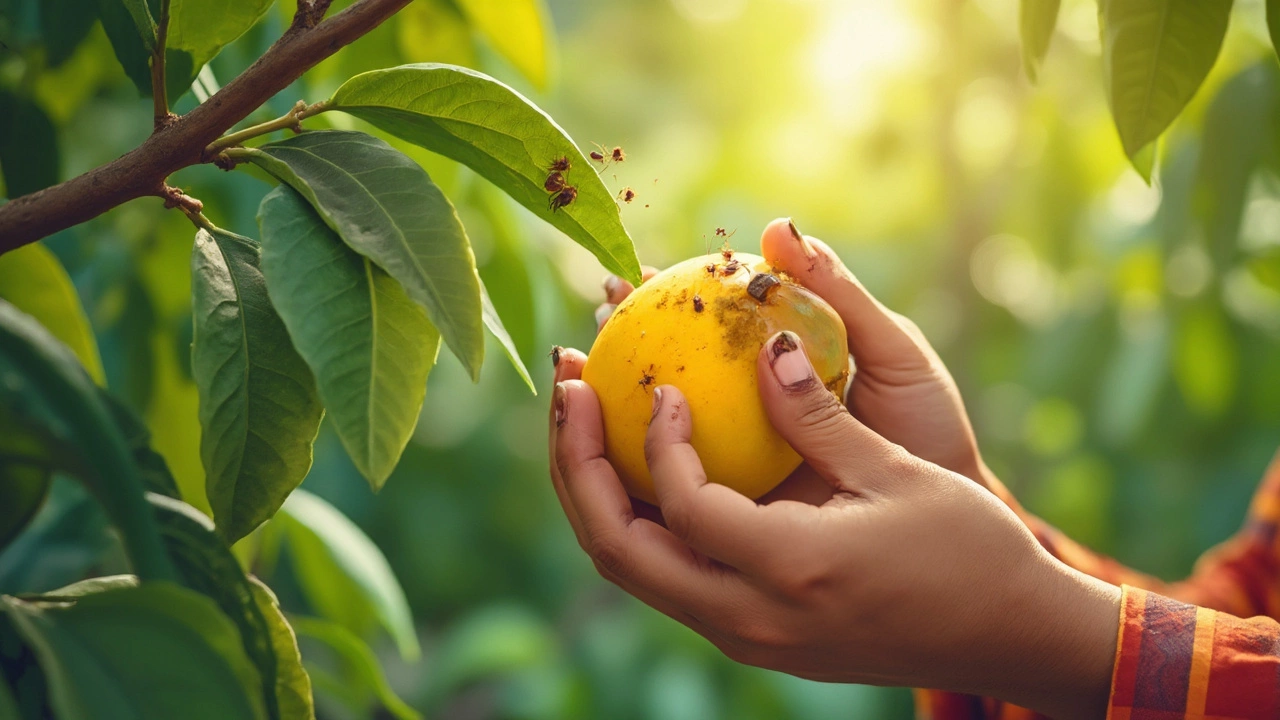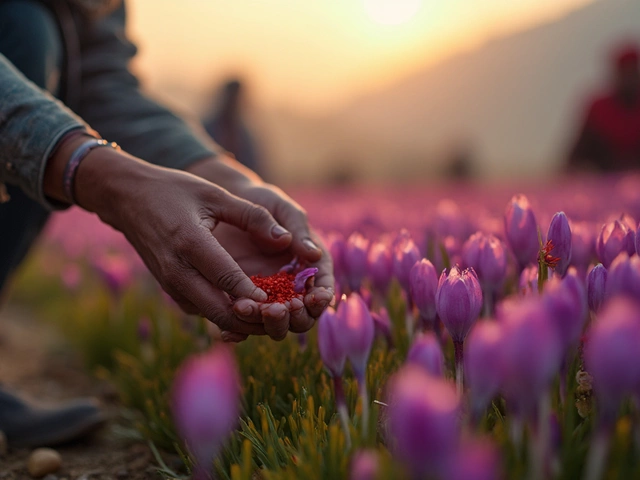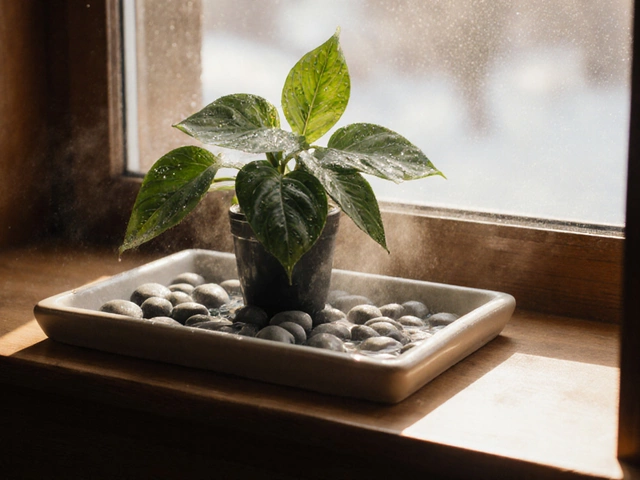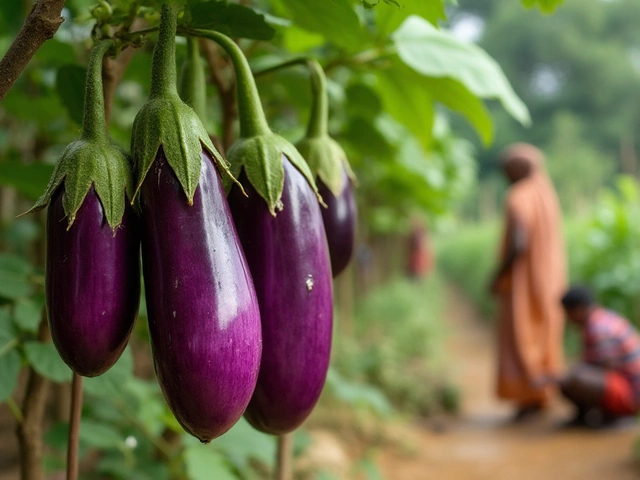If you ask almost anyone in India which fruit wears the crown, you’ll hear the same answer every time—mango. This isn’t just about taste. Mangoes are packed with history, pride, and even neighborhood bragging rights. Their juicy flavor isn’t the only thing that hooks people—these trees can outlive a generation and become a real part of the family.
Ever wondered why mango is the top dog? It produces insanely sweet fruit, but it’s also pretty easy to grow if you know a few basic tricks. Whether you’ve got a tiny yard or a decent patch of land, there’s usually a mango variety ready to settle in. Kids, adults, and even grumpy old uncles get a little happier when mangoes are in season.
- Why Mango Is the King of Fruits
- Best Mango Varieties for Indian Gardens
- How to Grow a Mango Tree at Home
- Mango Harvesting and Common Troubles
Why Mango Is the King of Fruits
There’s no debate—when it comes to Indian fruits, the king of fruits India title goes straight to the mango. India alone grows over half the world’s mangoes, shipping them just about everywhere. It’s not just the numbers, though. Every summer, street vendors and home gardeners get ready for the rush, because nothing beats the taste of a fresh, locally grown mango.
What really makes mangoes rule the table?
- Mangoes pack an incredible amount of vitamins. They’re loaded with Vitamin C and Vitamin A—so every bite is actually doing your body a favor.
- With over 1,000 different varieties in India, there’s a flavor for every tongue. Some are super sweet, some are a bit tart, and some taste like you’ve just found dessert in your backyard.
- The tree itself is hardy and long-living. Some mango trees in India are well over 100 years old and still fruiting every summer.
- Mangoes mean more than just food. They’re used in ceremonies, traditional recipes, and local fairs. They’re the heart and soul of the hot Indian months.
| Top Mango Producing States (2023) | Annual Production (Lakh Tonnes) |
|---|---|
| Uttar Pradesh | 48 |
| Andhra Pradesh | 41 |
| Karnataka | 16 |
| Bihar | 14 |
What about gardening? Mango trees don’t mind heat, and while they’re a bit fussy as saplings, once they’re set, you can pretty much count on years of harvests. So, if you want a fruit that’s delicious, meaningful, and kind of a legend, the mango checks every box. No wonder everyone loves showing off their own homegrown batch!
Best Mango Varieties for Indian Gardens
With hundreds of mango types across India, picking the right variety can feel like choosing your favorite child. If you want bold flavor and garden-friendly trees, though, a few names always come up. These types have fans from Mumbai to Kolkata, and there’s a reason they show up at every summer market.
- Alphonso (Hapus): This legendary mango from Maharashtra is famous for its creamy texture, bright skin, and insane sweetness. It's the gold standard for export and local demand. People in Ratnagiri straight up worship this mango for good reason.
- Dasheri: Lucknow backs this one. It's super juicy, long-shaped, and easy to grow, which is perfect if you’re just starting out. Dasheri trees don’t demand much pampering either.
- Langra: Varanasi’s pride. This green-on-the-outside variety is less stringy and ripens late, so your season gets stretched a little longer. If you love that tangy punch, you can’t skip this.
- Kesar: Gujarat’s answer to Alphonso, but slightly more affordable. Sweet and loved for desserts, Kesar trees do great in semi-arid weather—if your summers get hot, plant this one.
- Banganapalli: From Andhra Pradesh, this mango is smooth and fiberless, plus super popular across South India. If you prefer a less sugary hit, this is an easy pick.
Mango experts agree that some varieties are just better bets for home growers. As horticulturist Dr. R. K. Sharma put it:
"You don’t need a giant field for a good mango harvest—picking the right variety and rootstock makes all the difference in small gardens.”
Check out how some of these popular types stack up for practical factors:
| Variety | Fruit Season | Average Fruit Size (g) | Ideal Regions |
|---|---|---|---|
| Alphonso | April-June | 250-300 | Maharashtra, Karnataka, Goa |
| Dasheri | June-July | 200-250 | Uttar Pradesh, Punjab |
| Langra | July-August | 300-350 | Uttar Pradesh, Bihar |
| Kesar | May-June | 200-250 | Gujarat, Maharashtra |
| Banganapalli | April-May | 400-450 | Andhra Pradesh, Tamil Nadu |
If you’re after the real king of fruits India experience, go for a mango type that matches your city’s climate and your tastebuds. Don’t just copy what your neighbors grow—talk to local nurseries about scion varieties that fight off pests or mature faster. That little bit of homework usually means you get more fruit and less hassle later.

How to Grow a Mango Tree at Home
Growing a mango tree at home isn’t as tough as some folks think. If you’re in most parts of India, the climate already leans in your favor. Mango trees love heat and hate frost, so if you deal with real winters, you’ll need to provide some shelter or stick to a dwarf variety in a big pot.
Getting started? Here’s what you need to know for planting mango in your own space:
- Pick the right variety: If you have a small garden, go for Amrapali or Mallika—they stay compact. Got lots of room? Alphonso and Kesar can stretch out and take over.
- Location: Mango trees need at least 6 hours of full sun every single day. Stick them in the sunniest corner of your yard.
- Planting: Start with a healthy grafted sapling (not from seed if you want reliable fruit). Dig a pit that’s 2x2x2 feet, mixing the soil with 20-25 kg of decomposed cow dung or compost.
- Spacing: Standard mango trees need around 8-10 meters between each tree. Dwarf types can be kept 3-5 meters apart or in big pots.
Once your sapling is in, don’t drown it with water. For the first month, water twice a week. After that, just enough to keep the soil from drying out. Overwatering is the fastest way to kill your plant—you want the soil moist but not soggy.
Fertilize once every two months during the growing season (June to September) with well-rotted compost or organic manure. If leaf tips turn yellow, sprinkle a little potash or use micronutrient mixes—they’re easy to find at garden shops now.
| Growth Stage | Key Task |
|---|---|
| First Year | Light watering, no pruning |
| 2-3 Years | Shape the tree with light pruning, check for pests |
| After 4 Years | Fertilize before monsoon, regular watering, pest watch |
If you find white mealybugs or black sooty mold, use neem oil spray every two weeks. Avoid chemical sprays if you can—mango is for eating, after all. For ants, simple chalk lines or sticky bands on the trunk are usually enough. Most days, birds will do more pest control than you realize.
Patience is key. Grafted trees can start giving fruit in three to five years. Not instant, but the wait is totally worth it once you taste your first homegrown mango.
With these mango gardening tips, you’re set up for a killer harvest down the line.
Mango Harvesting and Common Troubles
There's nothing quite like biting into a super sweet, homegrown mango. But getting there isn’t about luck—it’s about timing and care. Mangoes don’t all ripen on the tree at once, so you’ll need to pick them in a couple of shifts as they reach the right size and turn a bit yellow or blush red, depending on your mango gardening tips and variety. If you wait until they drop, you’re too late—splits, bruises, and overeager squirrels will claim your harvest first.
Most Indian varieties are ready between April and June. You'll know a mango needs picking when it:
- Feels full and a bit soft around the stem
- Shows a yellowish tinge, losing the deep green color
- Has that “mango” smell near the stem
After harvesting, don’t stack mangoes high. If you’re not careful, too much pressure will bruise them, ruining that king of fruits India status. Lay them out in a single layer in a cool, shady spot for a few days so they can finish ripening.
But mangoes aren’t stress-free. Bugs, fungus, and weather are your main enemies. If you spot a white dust or black patch on leaves, it might be powdery mildew or anthracnose. Spray neem oil or copper fungicide right when you see the first signs—don’t wait, because these can spread fast in the humid rainy months. Mealybugs and fruit flies also love a juicy mango. Wrap fruit in old newspaper bags or use sticky traps to stop their party.
Here’s a quick snapshot of common troubles and fixes:
| Problem | How to Handle |
|---|---|
| Powdery Mildew | Neem oil spray, remove infected leaves |
| Anthracnose (black spots) | Copper fungicide, prune dense branches |
| Fruit Drop | Don't overwater, feed with balanced fertilizer |
| Fruit Fly | Use traps, bag fruit early |
Stay on top of these common issues and you’ll get plenty of clean, sweet mangoes—totally worth the effort. Stick to these simple steps and enjoy the pride of growing the king of fruits India in your own backyard.





